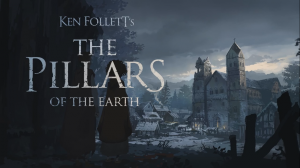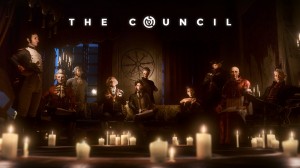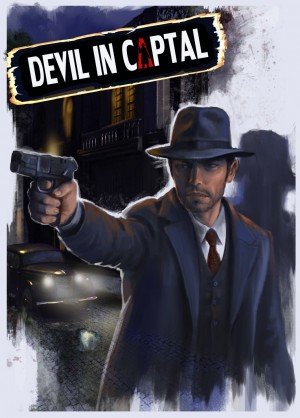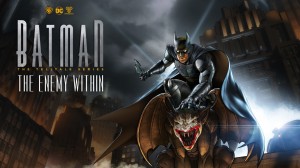Review for The Pillars of the Earth page t
Daedalic Entertainment has produced many high-quality point-and-click titles over the course of a decade, but adapting Ken Follett’s 1989 epic historical novel The Pillars of the Earth into an adventure game was always going to be a monumental task even for a studio with such a proven track record. The seeds for this ambitious and unexpected adaptation were sown in 2014, when German media conglomerate Bastei Lübbe—publishers of the German editions of Follett’s books—acquired Daedalic, and the timing of the first episodic release was successfully designed to coincide with the 2017 launch of Follett’s long-awaited A Column of Fire, the third and final installment in the Kingsbridge series that began with Pillars. How could a developer arguably most famous for a series of comedic cartoon adventures possibly transform a thousand-page novel with such breathtaking scope into an interactive experience? The answer, now that the entire epic story has been told, is brilliantly, in a magnificent adventure that fans of the book or great storytelling in general should play without hesitation.
The original novel is divided into parts, then chapters, and then sub-chapters, breaking up its massive story into manageable segments. The game follows a similar track, being split into three “Books” that were originally released separately but now form a single complete trilogy. Each Book contains seven chapters, with some chapters split further still into different player-character sections. The story begins in the fictional English territory of Shiring circa 1136, the time of The Anarchy (a real period of civil war and unrest among opposing factions under the uncertain reign of King Stephen following the death of Henry I).
It all starts near the town of Kingsbridge, where a man named Tom Builder roams the forests with his son Alfred and daughter Martha, having just experienced a tragedy involving his pregnant wife. Tom is looking for work as a master builder when he meets a mysterious and beautiful nomad woman named Ellen and her young son Jack Jackson. Within Kingsbridge, a kind-hearted monk named Philip attempts to set the town’s priory on the right path after the death of the previous prior James. He’s risen to his current position while navigating the difficult political climate of a disloyal sub-prior named Remigius and the very untrustworthy Bishop Waleran Bigod. And at the castle of Earl Bartholomew of Shiring, the earl’s beautiful teenage daughter Aliena confidently rejects a series of suitors, including the coarse and menacing William Hamleigh, son of a lord and owner of a sadistic mean streak.
The Pillars saga (best described in one book review as a “towering tale”) winds these characters and others related to them in and out of the real-life events of 12th century England, with triumphant successes and devastating losses along the way. The titular pillars represent the interest that drove Follett to write the book: the incredible medieval architecture of the era as best represented by its expensive and beautiful cathedrals. Follett, a noted atheist, found great fascination in how the communities of the period often measured their prominence and their piety by the grandeur of their church-building, and thus set to tell the story of the 35-year construction of the fictional Kingsbridge cathedral as the backdrop for the lives of all involved.
Follett’s love for architecture is so pervasive in his writing, it’s almost as though every majestic structure is a supporting character, so it was essential that the game’s artists bring the same sense of breathtaking wonder to the environmental design, and indeed they have. The hand-painted backgrounds are stylish and show an impressive sense of distance. In medieval times, much more of daily life took place outdoors than in our modern society, and the game does well in zooming out on many of its scenes, allowing views of distant mountain ranges and clouds looming over colorful skies, replaced in some later scenes by a gloomy and unsettling fog. Daedalic’s designers, committed to being true to the source, diligently studied period architecture, and the detail they’ve brought to the castles and churches of Shiring show the same fascination with this era that led Follett to write the novel.
This world is so beautiful to admire, it’s a bit of a disappointment that the characters themselves don’t look better. The models are adequate within the stylistic context of the game, but since most of the males wear various shades of drab brown, there is not a lot of color or variety. The character animation is a bit stiff as well: facial expressions tend to immediately shift one frame to the next rather than animate a change in emotion, and the lip-syncing is not at all convincing, apparently not often even really trying to be. The bigger problem, however, is that the minimalist design means there is not a lot of depth, so when someone walks across the screen (which they do quite slowly, even when using the “accelerated walking” option that can be frustrating during more urgent sequences) the effect is more like a piece of paper sliding across a static background than the seamless fluidity of a person actually moving within a world. Though the game has some visual novel elements, Daedalic has primarily remained true to its traditional adventure roots and so the character art and animation is an essential element of the experience, and one that I wish looked better.
Pillars allows for two control schemes, either a traditional dual-button, mouse-driven point-and-click, or for those inclined to play with a gamepad, a very simple and intuitive direct control scheme that uses the left stick to walk, right stick for inventory, and the buttons for interaction and observation. Either way, the “Look” concept here is handled in a way that I’ve never seen before. I’ll give you an example: take a look off to your right and say out loud the first thing you think about what you see. Chances are, you didn’t deliver an extensive description as though to an audience the way most adventure protagonists do, but rather rattled off a brief immediate reaction. I looked outside and said “sky looks hazy.” Similarly, to “Look” at a hotspot in this game is to be given a series of up to three quick thoughts in succession (if you look that many times) rather than one lengthy description. They are neither voiced nor capitalized sentences, just to drive home their informal, fragmented stream-of-thought nature.
This approach is unique, but because these thoughts are deliberately short, they also generally fail to provide much context about the world or reveal very much about your character’s thoughts and motivations, so I found them usually extraneous and less than helpful, and really disliked the low pounding tone that punctuates each one. If you feel that an adventure’s world is best discovered through thorough observation of hotspots, I think you’ll be disappointed with the sparsity of commentary here.
There isn’t a lot of actual inventory to be found and carried with you; the majority of your “items” to be used are actually thoughts or needs. “I need to get the brothers together for a meeting” becomes an object to be used on the scattered monks of Kingsbridge, rather than a dialogue tree option. I would say it works well as a way to manage your quests, but let’s not pretend there’s any real difficulty involved, particularly since the game displays (by default) your current goal on screen. One great exception is Prior Philip’s Bible, which he consistently carries with him and can be used on a wide variety of individuals to quote different Scripture, a great touch that adds character depth.
There’s not much challenge to speak of at all, really. Though Pillars isn’t a pure visual novel, feeling far more like a traditional adventure than the likes of Telltale's recent games, your objective is always plainly evident and simply exploring and talking will generally get you where you need to be. You’d be surprised how many interactions are optional, however. You may not even realize that helping an older monk ease his pain is something you can do, but it’s rewarding to know that the game does not force you down one linear path of exploration. There are a few brief sequences where an arrow moves quickly across a bar at the bottom of the screen, and you must click or press at the right time to accomplish an action such as firing a slingshot or chopping ingredients to cook dinner. Such moments are the closest the game gets to any type of action elements, and very rarely do they have any real urgency.
Many modern adventures have at least some player choice mechanics, which honestly was a scary proposition for me as someone who so loved the story as already told by Ken Follett, because the main design options tend to be either disrupting the story and allowing for wide diversion, or making the choices minor and artificial. The latter would have been the easier path, but a less appealing one, and that is not the direction taken here. While there are a few choice moments that are clearly inconsequential in the grand scheme, generally all the decision points really do have the power to swing the narrative, at least temporarily. What seems like a relatively minor decision of whether to identify a novice monk who commits a small offense has troubling ramifications much later, putting clear weight behind everything you do.
The decision points aren’t always related solely to your actions, either. Sometimes as you are about to do something, you’ll have to choose your specific motivation. There’s one very key moment playing as Jack when you are about to make a dangerous and irreversible decision, and you have three choices: do it for Mom, do it for Tom, or don’t do it. A simple yes/no binary choice, given the circumstances, would probably not be very interesting, but I found myself very thoughtful about why exactly I was about to do this (or not) and it put me deep into the mind of the character in a way that games often fail to achieve. Each of the 21 chapters ends with a recap screen that reminds you what exactly you did for future reference, and sometimes those choices are nothing like the path of the novel.
The dialogue options are not used quite as effectively, as instead of providing branching topics, most conversations are geared to exhausting all the possibilities. There are multiple scenes where silence as an option would have been very meaningful, but even though there’s a countdown timer for your decision, allowing it to expire just leads to one line of default dialogue and a restarted timer. There’s an emotionally intense scene where Philip is pressured to provide comfort to his priory after a devastating political maneuver against them, and saying nothing would clearly have been more consistent with Philip’s transitioning faith and emotions at that time, but despite my attempt to stay quiet, the game forced me to continue speaking until the options were gone.
Though the game’s remarkable faithfulness to 12th century England should appeal even to those entirely unfamiliar with the book, the novel has sold over 26 million copies and thus it is more than fair to judge the game on its adherence to the source material—and even with the choices you make, it is a triumph in that regard. The design is a masterful blend of hitting the important story beats and developing the essential relationships, while still allowing for the flexibility of a choice-based game. There are scenes, such as the initial discussion of the Kingsbridge cathedral plans between Tom and Philip, where substantially all the dialogue is word-for-word lifted from Ken Follett. However, there are major character relationships such as the dynamic between Jack and his older stepbrother Alfred (who had endless animosity toward each other in the book) which, through your actions, can be substantially modified. It is not at all surprising that the game has great reverence for the novel, of course; Follett himself was involved as a story consultant, and in fact even plays a minor voice role as the Kingsbridge priory’s cantor.
The renowned author is just one member of an absolutely superb voice cast. Not only do the English accents sound authentic (at least to my American ears) and seemingly true to the era, but the actors hit every beat of the characters they portray. Prior Philip, one of my favorite literary characters, first has the quiet confidence and faith of a devout man of God determined to remain strong in the midst of endless trials, and then finds himself nearly overcome with the doubt and confusion of someone confronted by failure and betrayal. Conversely, William Hamleigh, one of the most atrociously evil antagonists to be found, is exactly the right mix of sneering youth and sinister menace in his younger years, graduating to pure sociopathic evil. At one point while playing as Philip, you’ll be accosted by William with a profane monologue regarding his use of sexual intimidation that is downright stomach-turning—and which could only succeed with a committed vocal performance. Lady Aliena’s delivery is also pitch-perfect to the tone of the novel’s character: noble, loyal, and displaying as much confidence as she can muster in difficult times to mask her uncertainty. Even Jack in his early years (he begins the story at age 11) gets about as good a voice-over as you could ask from a pre-pubescent lad—not too cute or wide-eyed, but still youthful and likeably genuine. The only possible complaint for a fan of the book is Alfred, who is rather dull and lackluster in both performance and dialogue, not nearly the tormenting bully of the novel.
As good as the voices are, the orchestral soundtrack may be better. Daedalic spared no expense in bringing in the FILMharmonic Orchestra of Prague to perform an original composition, and the incredible result is reminiscent of some of the industry’s greatest soundtracks, a constantly evolving and unbroken symphony that frames every scene with the right emotional notes and the type of evocative score that I always prefer to turn on as background sound while reading (or even composing a review). This is easily my favorite adventure game soundtrack in recent memory and deserves to be enjoyed both as context to the game and on its own. And praise for Pillars’ audio should also include recognition of the fantastic effects used throughout: the slow whistling of wind outdoors, the crackling of a fire inside a house, and the slow movement of a river mill add such a natural sense of place to each scene. Every little thing about the sound design of this game is all about professionalism and it is marvelous.
The early chapters of the game focus primarily on Prior Philip and young Jack. The third major POV character of the novel, Aliena, daughter of the Earl of Shiring, comes more into focus as the second Book begins, when Jack grows into his late teens and becomes an equally essential character. Philip and Aliena’s stories, though very deliberate in pace, are as fascinating to watch unfold on the screen as they were to read about. Jack is less interesting as a character and his troubles with his stepbrother are not emphasized effectively here, mostly because Alfred is not written to be nearly the dislikeable bully here that he was in the novel. The storytelling also can stagger a bit during the visual novel travel sequences, when you are essentially clicking on text options beneath a static map.
But for any minor complaint I may have, there are many more brilliantly compelling moments of perfect storytelling, such as a darkly gripping sequence in the middle chapters where Prior Philip reckons with his faith in the midst of violence around him. It is so rare to have a game that handles death and helplessness in the midst of evil so well; there are many emotionally exhausting scenes, but always sprinkled with an element of hope on the horizon. The individual chapters range from just twenty minutes in length to over an hour. Most of the shorter ones are contained in the first Book; nearly every chapter in the final two Books is longer. The total playtime is likely to push over 20 hours for most, absolutely none of which is wasted for a patient gamer who enjoys exploring a beautiful world.
As with any choice-heavy game, there is plenty of wondering whether certain decisions could be made differently, and the decision points seem to allow you to deviate broadly from the path of the book. Usually I stayed close to the story I was familiar with, since it generally felt the most true to the motivations of the characters. However, the inclusion of achievements serves to tease any missed opportunities. There are a total of 41 achievements available, but it’s impossible to acquire all of them in a given playthrough as some of the key character choices offer a separate achievement for each major path. It strikes me as misguided to offer achievements specifically for a single branch in a story tree where multiple choices all appear to have validity, and I hope that achievement-hunting completionists aren’t driven to constantly rewind their story. (Even with an autosave, the game allows for hard saving, with unlimited save slots, at any point.) Please take my advice: make your choices and dwell in them, enjoying wherever the remarkable story takes you.
I requested this review assignment eagerly, and then almost immediately regretted it, for a very simple reason: The Pillars of the Earth is my favorite book ever. I have always adored every aspect of this extraordinary novel, a book I consider to be as close to perfect as a work of fiction can be. And therefore, I couldn’t help but be apprehensive of all the ways that Daedalic could have gotten this very wrong as I was booting up. Now that I’m done, other than some minor concerns about the character art and a couple other small qualms, overall I’m impressed by the awesome quality of this game and the surprisingly effective way choice mechanics have been introduced into such an established story. My initial concerns quelled, I’m so glad that I was patient enough through the deliberate pace of this epic narrative adventure to appreciate the richness of its emotional beats. Those looking for challenging puzzles or complex gameplay won’t find either here, but adventures that tell a story this well are so rare that every moment of this one should be treasured like the most magnificent cathedral.






























